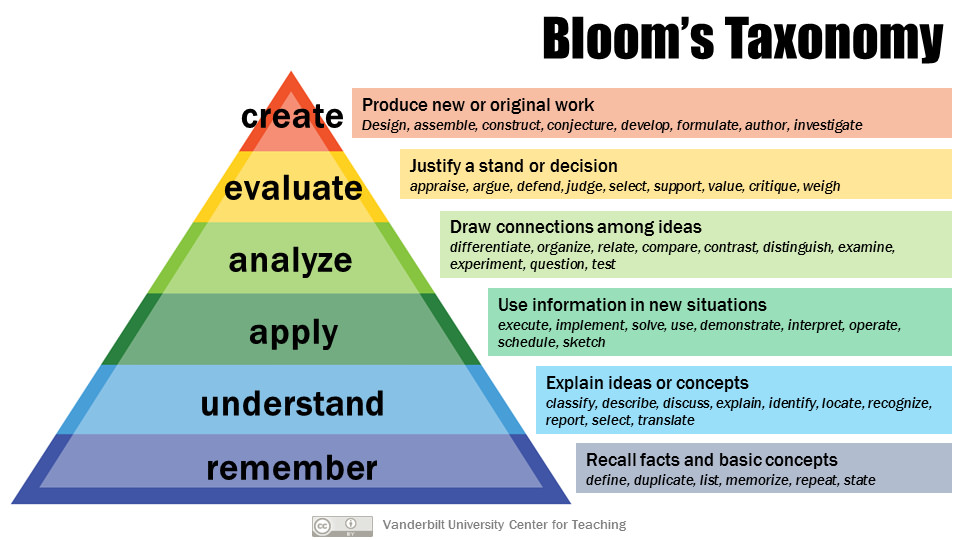American Association of Higher Education: Principles 3 & 4
Principle 3: Assessment works best when the programs it seeks to improve have clear, explicitly stated purposes. Assessment is a goal-oriented process. It entails comparing educational performance with educational purposes and expectations—those derived from the institution’s mission, from faculty intentions in program and course design, and from knowledge of students’ own goals. Where program purposes lack specificity or agreement, assessment as a process pushes a campus toward clarity about where to aim and what standards to apply; assessment also prompts attention to where and how Program Goals will be taught and learned. Clear, shared, implementable goals are the cornerstone for assessment that is focused and useful.
Principle 4: Assessment requires attention to outcomes but also and equally to the experiences that lead to those outcomes. Information about outcomes is of high importance; where students “end up” matters greatly. But to improve outcomes, we need to know about student experience along the way—about the curricula, teaching, and kind of student effort that led to particular outcomes. Assessment can help us understand which students learn best under what conditions; with such knowledge comes the capacity to improve the whole of their learning.
Establishing Program Goals & Student Learning Outcomes
Program Goals
Program Goals are broad statements that should define the long-term outcomes of the program or course of study. Program Goals should give a concise overview of what students should have learned, attained, or be able to do by the end of the program or course of study.
Example Program Goals:
- BS Elementary Education - The goal of the Elementary Education Bachelor of Science is to graduate students who are prepared to teach in K-6 classrooms.
- Master of Business Administration - The goal of the Master of Business Administration program is to graduate students who are prepared to be innovative industry leaders.
Student Learning Outcomes
Student Learning Outcomes should be informed by Program Goals.
Student Learning Outcomes are statements that define the knowledge, skills, and/or abilities that the students have and can demonstrate when they have completed or participated in a course of study or program. Student Learning Outcomes should be specific, meaningful, and measurable, observable, and/or demonstratable. Another way to think about Student Learning Outcomes is to align them with SMART objectives—specific, measurable, achievable, relevant, and time-bound.
A Student Learning Outcome statement should consist of an action verb and a statement that defines the knowledge/skill/ability that will be measured/observed/demonstrated.
Example Student Learning Outcomes:
- The student will evaluate news sources for media bias and logical fallacies.
- The student will identify all the bones and joints of the human body.
- The student will create a business proposal that appropriately demonstrates and applies business strategies and concepts.
Bloom’s Taxonomy
A helpful resource when crafting Student Learning Outcomes is to apply Bloom’s Taxonomy.
Bloom’s Taxonomy is an educational framework that has been utilized and revised by educators for decades. For more information about Bloom’s Taxonomy, please follow the link above to Vanderbilt University Center for Teaching and Learning’s page.
 Armstrong, P. (2010). Bloom’s Taxonomy. Vanderbilt University Center for Teaching. Retrieved Sept. 2022 from Bloom's Taxonomy.
Armstrong, P. (2010). Bloom’s Taxonomy. Vanderbilt University Center for Teaching. Retrieved Sept. 2022 from Bloom's Taxonomy.
This page includes additional information that includes a separate taxonomy of cognitive knowledge:
- Factual Knowledge: terminology; specific details and elements
- Conceptual Knowledge: classifications and categories; principles and generalizations; theories, models, and structures
- Procedural Knowledge: subject specific skills and algorithms; subject-specific techniques and methods; criteria for determining when to use appropriate procedures
- Metacognitive Knowledge: strategic knowledge; cognitive tasks, including appropriate contextual and conditional knowledge; self-knowledge
UAB Outcomes
To add Student Learning Outcomes to UAB Outcomes, use the following link: uab.campuslabs.com/outcomes.
Once there, you will be asked to complete the template below.

For additional question or assistance with UAB Outcomes platform, please reach out to the